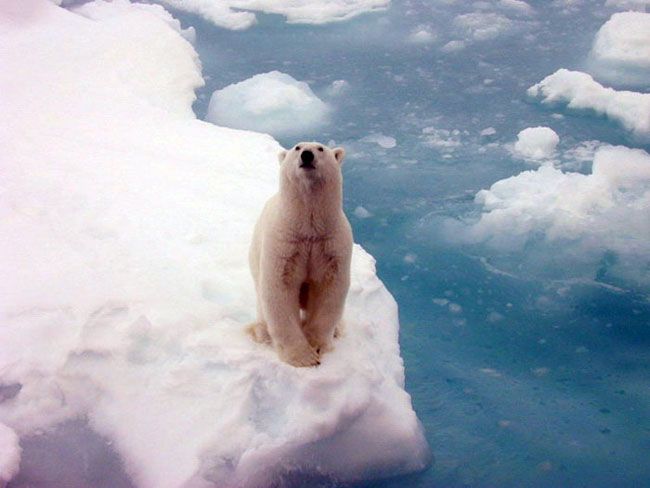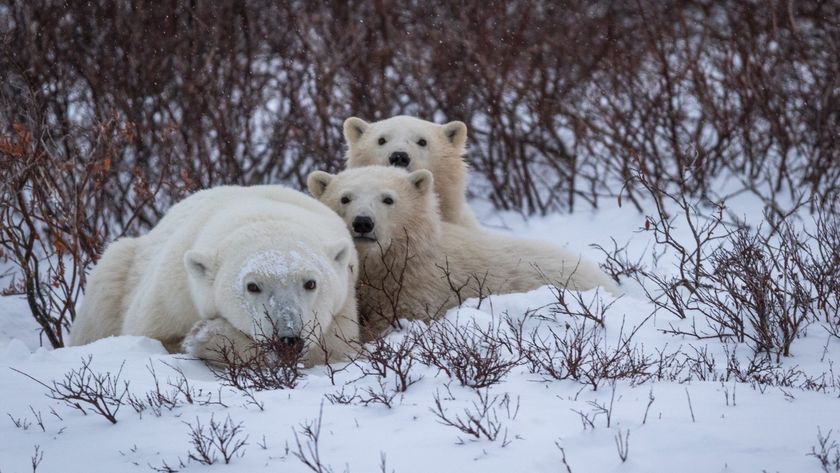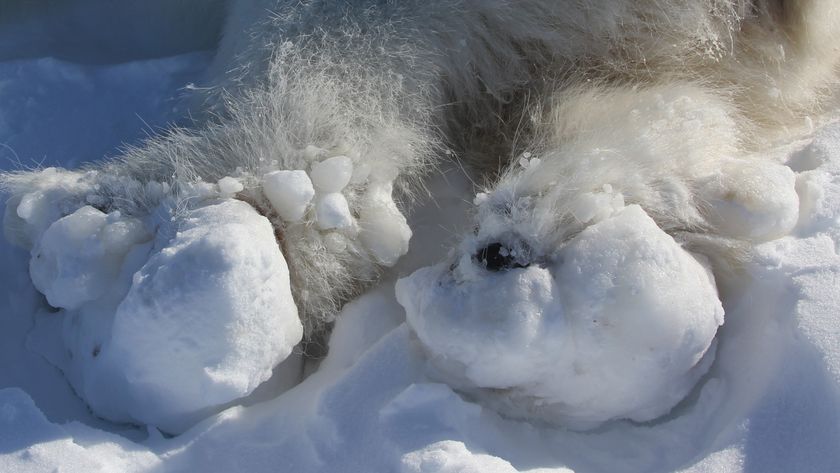Goose Eggs Could Save Polar Bears

Polar bears could survive extinction despite many starving to death in coming years, according to scientists and other observers who have discovered that some of the bears have found a new food source — goose and duck eggs.
The eggs could be coming in part from a rebounding goose population in the Hudson Bay area, feeding polar bears whose icy habitat in the Arctic is melting, one new study finds.
In recent years, much of the sea ice that polar bears use as a hunting platform for seal meals has melted, forcing some bears — particularly young males — farther north or onto land, where they are not as adept at hunting. When stuck on land for months, a polar bear typically is forced to survive on its own fat reserves.
The bears were listed earlier this year as a threatened species under the U.S. Endangered Species Act as populations have declined.
Meanwhile, snow geese are thriving near the western Hudson Bay, and researchers say there are in fact too many of them. Their eggs can be a good food source, researchers report in the online version of the journal Polar Biology. The geese nest on tundra that some bears have retreated to.
"Over 40 years, six subadult male bears were seen among snow goose nests, and four of them were sighted after the year 2000," says Robert Rockwell, an ornithologist at the American Museum of Natural History and a biology professor at City University of New York's City College. "I've seen a subadult male eat eider duck eggs whole or press its nose against the shell, break it, and eat the contents."
Ice is melting, on average, 0.72 days earlier each year in the region studied. Snow geese are hatching eggs about 0.16 days sooner each year, according to Rockwell and his graduate student Linda Gormezano.
Sign up for the Live Science daily newsletter now
Get the world’s most fascinating discoveries delivered straight to your inbox.
Current trends indicate that the arrival of polar bears will overlap the mean hatching period in 3.6 years, and egg consumption could become a routine, reliable option, the researcher concluded in a statement released today.
A polar bear, the largest land carnivore, would need to consume the eggs of 43 nests to replace the energy gained from the average day of hunting seals, but Rockwell and his colleagues figure that while many polar bears may starve in coming years, the resourceful animals just might survive extinction.
Polar bears survived a warm period about 125,000 years ago, when sea level was 12 to 18 feet (4 to 6 meters) higher than it is now and trees lived above the Arctic Circle, the scientists point out. "They've been through warming before," Rockwell said.
The polar bears' potential movement to a diet of more eggs brought to mind a quote by Ilkoo Angutikjuak, an Inuit who lives in the Canadian province of Nunavut, in the February 2008 issue of Natural History magazine, Rockwell said.
Angutikjuak said: "The animals will adapt, I've heard that because they depend on sea ice, polar bears will go extinct, but I don't believe it. They are very adaptable. As the sea ice changes, polar bears might get skinnier and some might die, but I don't think they will go extinct."
The research was funded by the Hudson Bay Project and the American Museum of Natural History.
- Gallery: World's Biggest Beasts
- North vs. South Poles: 10 Wild Differences
- Polar Bears: More News & Features












